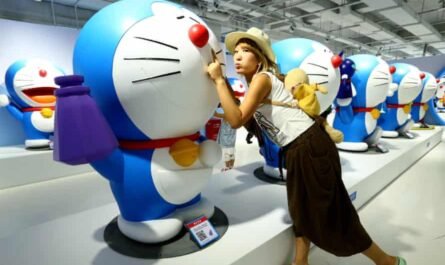Hey, where did the original elements go?
With the recent anime boom, the hurdles for anime with original works are only getting higher and higher. “Bocchi the Rock!”, “Oshi no Ko” and Funeral Freeren,” an anime that brought out the charm of the original work to the fullest, was praised. On the contrary, anime Pros and cons are divided regarding the original setting and development. However, in the past, many works have received rave reviews in the anime industry despite “ignoring” the original work.
An example of this is the anime “Hare Toki Toki Buta,” which captivated many viewers with its surreal gags. It’s full of black jokes, meta comments, over-the-top plot twists, and blatant exaggerations that you wouldn’t expect from a children’s anime, and the content was so accessible and chaotic that it was said to be “an anime too early for humanity.” However, the animated version differs entirely from the original children’s literature.
In the first place, the character “Harebuta,” who is familiar with the anime version, does not appear in the original work. There is certainly a scene where what I wrote in my diary becomes a reality, and pigs fall from the sky, but like in the anime, I named one of them “Harebuta” and established myself in a Pikachu-like position. It won’t develop.
Of course, some episodes recreate the original work to an acceptable degree, but the rest is almost like an original anime directed by Shinichi Watanabe. However, instead of being criticized, the anime “Hare Toki Toki Buta” has been passed down as a masterpiece of nonsense gag animation, and judging by the comments, the original author seems to have highly praised the anime version.
The anime has 61 episodes, and the most recommended one is the musical episode in episode 57. All of the dialogue in this episode was composed of songs, and it received praise online, with comments such as “It’s just so chaotic (lol)” and “I love how insane it feels.”
Are there any discrepancies between the original work and the anime?
The classic transformation magical girl anime “Akazukin Chacha” that aired in 1994 was also an animated work with very different content from the original work. First, the original manga serialized in the monthly magazine “Ribon” is not a transformational magical girl story but a slapstick comedy about Chacha, a wizard’s egg, and her friends.
However, at a sponsor’s request to sell toys, it was transformed into a magical girl anime where characters transform into “magical princesses” and fight enemy characters. At that time, “Sailor Moon” was gaining popularity, so that may have had an influence. Anime fans who later learned about the content of the original work were surprised to hear such comments as “Don’t they transform in the original?!”
However, in the original work, original characters from the anime appear as re-imported characters, so the original author, Min Ayaka, probably didn’t have a wrong opinion of the anime version that turned into a transforming magical girl thing. Is it?
The legendary anime “Galaxy Angel,” which symbolizes the otaku culture of the early 2000s, is also a work in which the content of the original work and the anime do not match in any way. It is famous as Chronologically, the anime came first, but since it originally started as a game project, the game version released in 2002 is the original work. And this game version was a reasonably severe space opera.
On the other hand, the widely known anime “Galaxy Angel” is a high-tension sci-fi gag comedy with a style 180 degrees different from the game version. However, certain circumstances led to this.
To explain the reason briefly, the anime version was too short to be made to promote the game version. Excluding the OP and ED, it’s only a little over 10 minutes long, and it’s said that they decided to make it a gag anime because they thought it wouldn’t be possible to reproduce the epic space opera like the game version faithfully. As a result, it has become a gag comedy with parodies and chaos, and even if the main character dies, he usually lives in the B part.
By the way, Takaaki Kitani, the executive producer of “Galaxy Angel,” later created “Detective Opera Milky Holmes,” which included “I wanted to create something that was like combining “Galaxy Angel” and “Detective Conan” and dividing it in half.” is. There seems to be some causal factor behind the fact that the game version and anime version of “Detective Opera Milky Holmes” have entirely different content, just like “Galaxy Angel.”
While it is essential to bring out the charm of the original work when adapting it into an anime, it is also important that the work is purely “interesting” in the first place. If it ends up being a win-win for the anime and the original work, then it can be said that this is also a form of happy animation.











